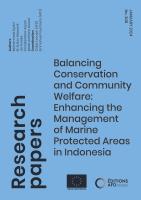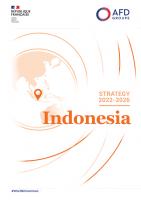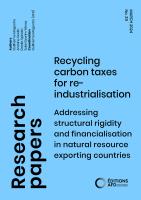The authors analyze the exchange rate and balance of payment crisis risks when MDBs lend, in hard currency, to NDBs, for NDBs to onlend to investment projects. Investment projects maybe “export-enhancing” (EXIPs), which generate hard currency (for example, building a port or developing export agriculture), or “domesticoriented” (DOIPs), which don’t generate hard currency (for example, a solar farm or a sewage system). If MDBs want to increase the proportion of onlending to DOIPs, they need to increase their refinancing to NDBs, and allow more time to pay back the loans. Further, MDBs need to reduce the interest rate charged on NDBs.
This Research Paper is published in the framework of the International Research Initiative on Public Development Banks working groups and released for the occasion of the 14th AFD International Research Conference on Development.
It is part of the pilot research program “Realizing the Potential of Public Development Banks for Achieving Sustainable Development Goals”. This program was launched, along with the International Research Initiative on Public Development Banks (PDBs), by the Institute of New Structural Economics (INSE) at Peking University, and sponsored by the Agence française de développement (AFD), Ford Foundation and International Development Finance Club (IDFC).
Have a look on the key findings for a quick overview of the research results
-
on the same region
Institutional documentStrategy Documentspublished in February 2024Research documentpublished in January 2024Research documentpublished in January 2023Institutional documentStrategy Documentspublished in October 2022Evaluation documentpublished in February 2022Institutional documentStrategy Documentspublished in February 2022 -
on the same topic
Institutional documentReviews and Activity Reportspublished in April 2024Research documentpublished in April 2024Vidéopublished in March 2024Research documentpublished in March 2024Research documentpublished in January 2024Research documentpublished in January 2024 -
from the same collection
Research documentpublished in March 2024Research documentpublished in February 2024Research documentpublished in January 2024Research documentpublished in January 2024Research documentpublished in January 2024Research documentpublished in January 2024





















